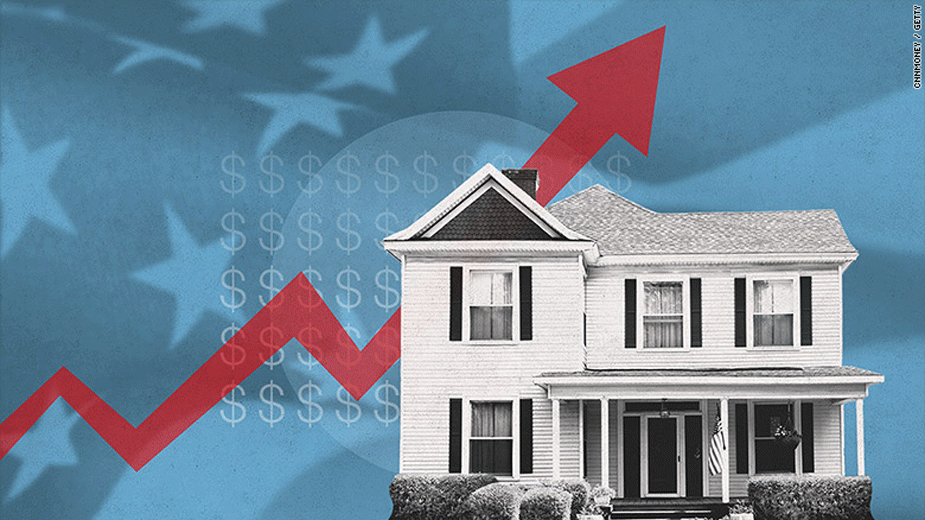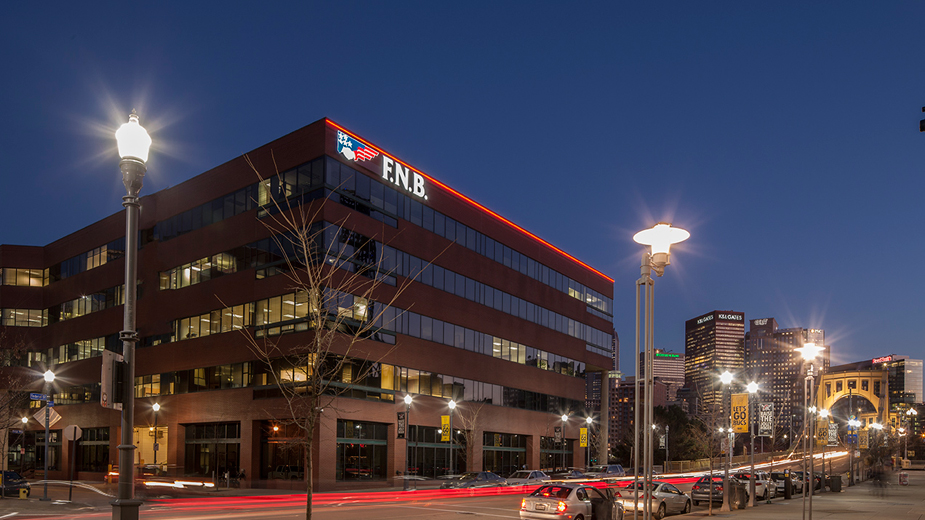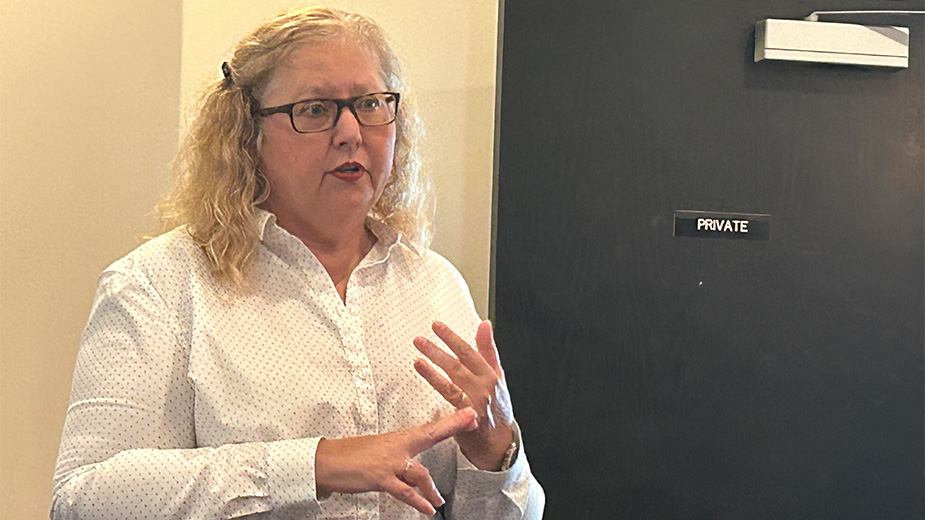Homebuyers Undaunted as Rates Rise, Bankers Say
YOUNGSTOWN, Ohio — Since the start of the year, mortgage rates have made a steady ascent, but lenders have found that rising rates are not making homebuyers shy away from borrowing.
“As rates are expected to go up more, we thought there would be a probability that business would slow down. But it’s been the exact opposite,” says Bill Fulk, senior vice president of lending at 717 Credit Union. “Business has been fantastic for us.”
According to the Primary Mortgage Market Survey of Freddie Mac, the U.S. weekly average for a 30-year, fixed-rate loan Jan. 4 was 3.95%. On May 24, 30-year fixed-rates were at 4.66%.
“When rates start going up, it’s typically because people are comfortable with the economy and it motivates people to do more things and spend more money,” Fulk says.
Lenders and mortgage professionals from 717, PNC Bank, Top Flite Financial, Home Savings Bank and Farmers National Bank agree that rates today still remain at a historic low. They were interviewed before the Federal Reserve voted Wednesday to increase the benchmark interest rate a quarter point– from 1.75 to 2%. Within hours, PNC Financial Services Group announced it would increase its prime lending rate to 5% effective today. Other banks doing business in the region are expected to follow suit.
In May 1998, the 30-year fixed rate was at 7.14% and in May 1988 was at 10.46%, according to Freddie Mac.
As rates have gone up, 717 has seen an increase in members borrowing for new house purchases and a decrease in refinancing loans.
“Refinancing has almost disappeared right now,” says Fulk. “It’s now 20% of business and 80% of business is for purchase.”
The biggest challenge in the market is the shortage of houses available for sale.
“Mortgage rates have ticked up, but still at historic lows. So we are not finding interest rates to be one of the biggest obstacles by any means,” says Staci Titsworth, regional sales manager-vice president at PNC Bank. “The issue is inventory of homes. As soon as a home goes on the market, there are multiple bids for buyers on that one property.”
Titsworth finds that influxes of millennials are becoming first-time homebuyers between the ages of 25 and 35, which is an older age group for first- time homebuyers.
“Millennials are moving back home with their parents to save money and establishing themselves into the workforce,” she says. “Millennials look at a home purchase as a significant investment rather than just a place to live. They are taking their time to shop and save.”
For the northeastern Ohio region of PNC, Titsworth estimates that the average mortgage borrowed is around $170,000.
Both first-time homebuyers and second- or third-time homebuyers still put a 20% down payment on a house, Titsworth says. But for those homebuyers who can’t afford the 20%, PNC offers a loan program called the PNC Community Mortgage.
“With the program, only a 3% down payment is needed on the sales price and no private mortgage insurance is required,” Titsworth says. “That’s a terrific savings to homebuyers.”
The program helps borrowers in designated areas who meet an income criterion and down payment, assistance programs are available for the 3%.
Besides having the funds for a down payment in a housing market with little inventory, being pre-approved is the best way to ensure a consumer will get the house he wants.
“They need to be pre-approved for accurate reflection on buying power and their finances,” says Ryan Cuffle, branch manager for Top Flite Financial in Boardman. “If they are thinking down the road that they want to buy, then they need to get all their finances in order. So when they do find a house, they can write an offer quickly.”
Top Flite offers various loans for residential borrowing, as well as refinancing, to meet its clients’ needs. Over the last year, Top Flite has seen its loan applications increase by 13%, Cuffle says.
Even as rates have gone up, Cuffle says they are still lower than when he bought his house 15 years ago. “Now is a really good time to buy,” he says.
“It’s a unique time in the market,” Cuffle says. “The younger generation are buying for the first time and more of the baby boomers are downsizing.”
At Home Savings Bank, its overall loan production is up about 20% from the previous year, says Mike Garmone, vice president of residential lending.
“When rates move up, it moves folks off of the sidelines,” he says. “They are reading and seeing rates are going to continue to trend up in the near future. So they’re deciding to move into the market for a new home now.”
Most of Home Savings customers are applying for fixed-term rates with terms ranging from 10 to 30 years because rates in the mid-fours are “still really attractive,” Garmone says. If rates continue to trend upward, customers will most likely shift toward adjustable-rate mortgages.
The tipping point for many homebuyers is when rates rise above 5%, Garmone says. “If rates begin to get too much over 5%, it could begin to slow things down a little bit, but until we get there we will see production remain strong.”
With a strong economy and shortage of houses on the market, Farmers National Bank has seen an increase in its new construction loan, says its chief banking officer, Mark Witmer.
“Construction lending has been strong,” he says. “The only thing holding back the purchases of homes seems to be the lack of supply for homes for sale.”
One of the biggest concerns when customers are looking to buy or build a house is what school district the property falls in, Witmer says.
To help ease borrowing, Farmers introduced its Farmers Mortgage Mobile App last year. The app can be used to fill out an application if someone doesn’t have the time to visit Farmers to talk to a mortgage lender face-to-face. Among other uses are downloading documents and getting updates from a lender.
“The mobile app has been very popular in the past year,” Witmer says.
As summer arrives, home equity loans and lines of credit are beginning to pick up, says Jim Horvath, Home Savings vice president of director of consumer lending.
Home Savings home equity loans and lines of credit portfolio are slightly up from where they were last year at this time, Horvath says.
“We had a difficult winter,” he says. “Now that it’s 81 degrees outside, people are starting to do things.”
Most of the loans and lines of credit are used for home improvements with popular projects being remodeling of kitchens, new roofs and room additions.
Most borrowers prefer the line of credit to the loan so that they can draw down on the line when they need it, Horvath says. However, with the rising rate market, he says people might go back to loans for home improvements.
Home Savings home equity loans are for one-time borrowing needs or debt consolidation with a fixed payment, whereas its line of credit has an adjustable rate.
“The Federal Reserve plans on two or three more increases this year and more increases for the rate for next year. So we do anticipate rates going up,” Horvath says. “I have found on the home equity side of it, people still have needs. They still want to remodel their house. There’s always going to be a need to borrow money.”
Copyright 2024 The Business Journal, Youngstown, Ohio.



